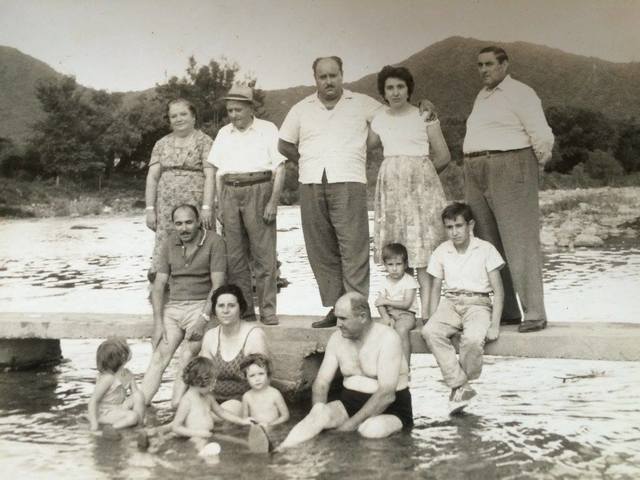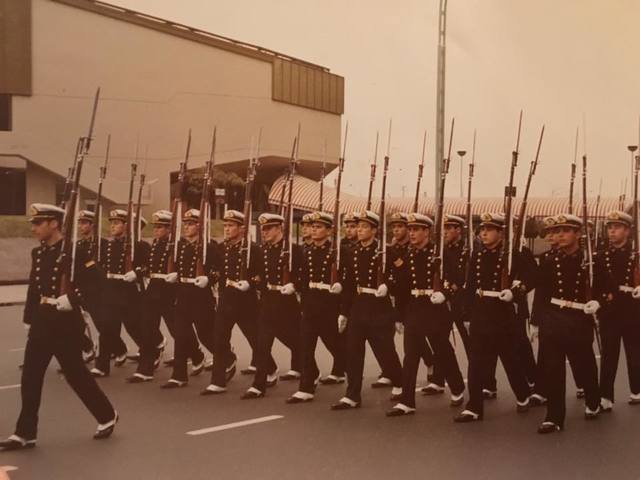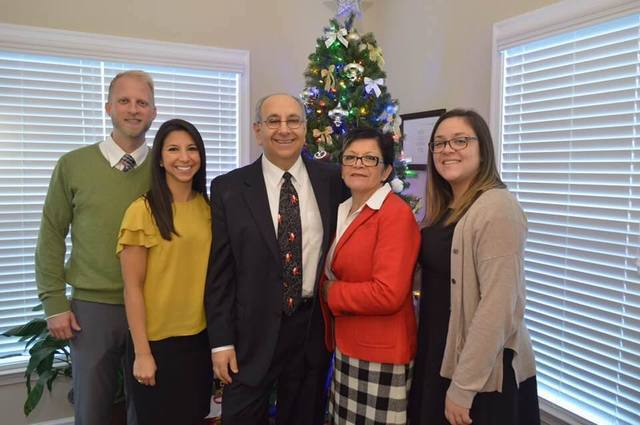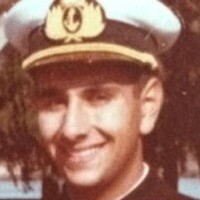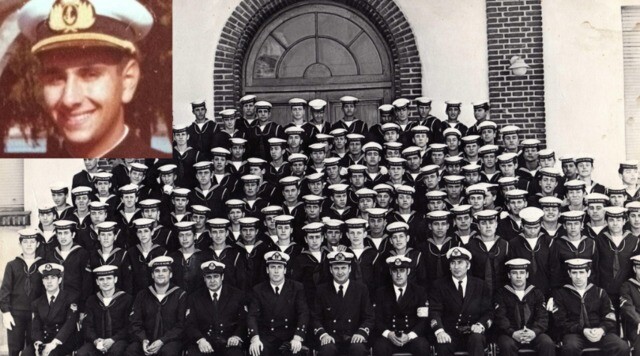Ed Marquez walked toward the main gate of his military school in Buenos Aires, Argentina. It was late spring and he was dressed in white. While Marquez had been on guard duty the night before, a friend also on duty fell asleep. As a result, both young men were forbidden from leaving the school for two weeks. If the guards at the front gates permitted him to leave the campus, Marquez was on his way to be baptized. But if his name was on the list of those not permitted to leave, he could potentially face serious consequences.
As he approached the guard and glanced at the list, he could see his friend’s name on it. He handed the guard his ID.
“I’m going to live here with shackles and handcuffs,” he thought as he prepared himself for the punishment he would face when the guard found his name on the list. But the guard on duty looked up, handed him his ID, and said, “Have a good day!”
It was a miracle, and Marquez knew it.
The Obscure Place with a Basketball Court
As a young boy, Ed Marquez lived very close to a Latter-day Saint chapel in Rosario, Argentina, but he never thought of it as a place of light. For starters, the building was always dark. Looking back, Ed Marquez recognizes that this was because Latter-day Saints attended church at the same time he was attending church as a Catholic at the local parish, but he always thought of the Latter-day Saint chapel as an obscure place that had a basketball court out back he would’ve liked to play on but felt too uneasy to use.
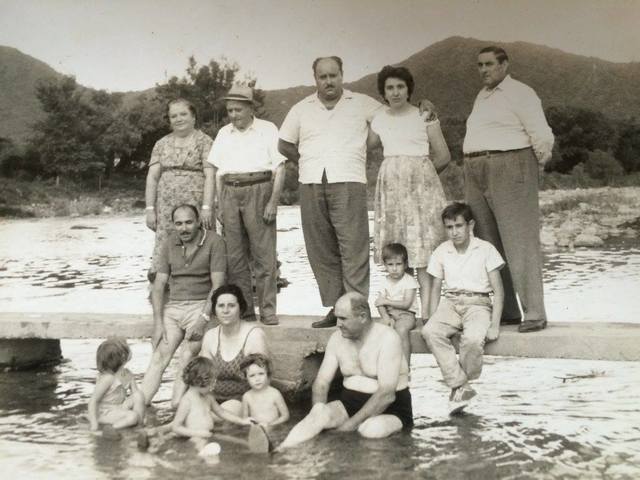
Ed Marquez with his family. Marquez's parents are pictured in the center on the back row, with Ed (left) and his brother (right) sitting on the bridge in front.
As a teenager, Ed Marquez had a strong interest in religion. Although very involved in his Catholic congregation from his youth, he began to explore many different religions. But he recalls that this search left him feeling empty. “I thought that the church the way that the Bible explained it and the way the Savior is, in my mind, was not on the earth,” he says. “I figured that there was no church of Christ on the earth, only church of men.”
His interest in religion ended around the time Marquez began his military career by joining the navy and moving to Buenos Aires to attend La Escuela de Mecánica de la Armada, a school for non-commissioned officers. The school was all Marquez felt he could aspire to, given the fact that he had not completed high school and his parents were divorced. Officer school, which is comparable to the U.S. Naval Academy, was “not for people like me,” Marquez thought. But he soon discovered that if he finished among the top few students in his class, he could take an exam and be admitted into officer school. This form of admittance had never been achieved previously, but it was a possibility, and that was all Marquez needed to know. He worked feverishly to succeed in school.
One of Marquez’s fellow classmates also seemed to work incredibly hard academically, and the two young men seemed to fight for positioning. They were competitors but had a healthy respect for one another. They also found that they needed each other. Marquez claims he “couldn’t speak English if my life depended on it,” and his classmate, Sergio Krasnoselsky, who today serves as an Area Seventy, needed help with science—a subject Marquez considered a personal strength. While the two helped each other work toward academic excellence, Marquez noticed Krasnoselsky studying the Bible. He asked if he could study with him, and unbeknownst to Marquez, the two boys began following the Latter-day Saint CES curriculum. After studying together for a time, Marquez finally asked the young man what church he attended. He was a Latter-day Saint.
“When he told me that he was a Mormon, I just couldn’t believe it,” Marquez recalls. “All these memories of my childhood and that obscure place, I was thinking, ‘This is crazy. He cannot be a Mormon. I have to rescue him. I have to figure out this Mormon thing so I can help him get out of it.’”
He wouldn’t have called The Church of Jesus Christ of Latter-day Saints a cult because that word was not part of his vocabulary, but, in retrospect, he recognizes this is how he thought of the Church at that time. In an effort to get to the bottom of the religion, he eventually decided to go to church with this classmate. As it turns out, the weekend he decided to attend was the same weekend that thousands of young single adult members of the Church were gathering in Buenos Aires for a special conference. Marquez had no idea what he was getting into, and he was shocked at what he found.
Up to this point, Marquez thought this kind of clean yet fun environment only existed in movies. But these young people had traveled for hours by bus or train to be there, even at a time of war and political unrest in Argentina.
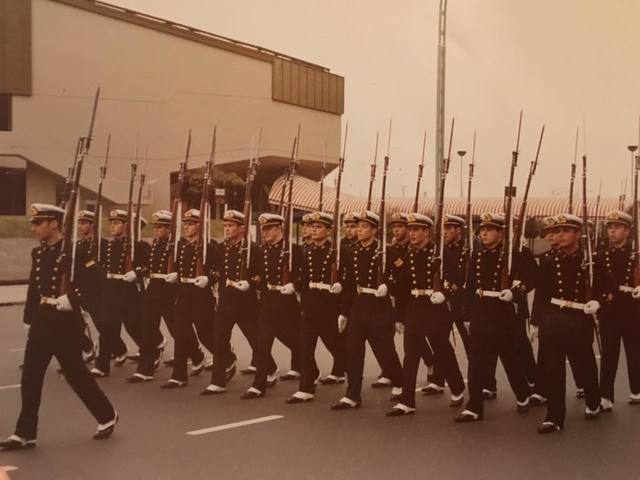
Ed Marquez marches with his naval class. Marquez is in the second row in the center.
“[At that time] there was a lot of mistrust and hurt, especially among young people and neither side was good,” Marquez remembers about feeling and seeing the hurt of war as it took its toll on his native country. “So seeing these people who were pure of heart, you could see it on their countenance, was a shock for me. This was something I had searched for all my life and I had never seen it. I had come to believe that it didn’t exist.”
The “Elder”
When the weekend conference was over, the young single adults from other cities/areas returned home, but the locals who remained where Marquez lived became his friends as he began attending church every Sunday. The young Marquez—who always arrived early, had a military haircut, and wore a conservative white shirt, a suit, and a tie—fit right in. In fact, he fit in so well that everyone in the ward assumed that he was a recently returned missionary. All of the ward members called him “Elder,” but the only people who felt they didn’t need to talk to Marquez were the missionaries.
He recalls laughingly, “Missionaries were the strangest people there [for me] because they wore these name tags but they never talked to me.”
Eventually, the still-unbaptized Marquez began serving on a regional and national planning committee for single adults, which was led by what we now call an Area General Authority Seventy. The Church in Argentina at the time compensated for the nation's limited wholesome activity options by having dances almost every weekend. As Marquez helped plan these dances and went out of his way to make sure the young women made it home safely, he became a hit not only with the single adults but also with their parents.
But confusion surrounding his Church membership continued to build.
Each time baptism came up and Marquez replied that he was baptized as a baby, people would laugh before moving the conversation to another topic.
“Everyone thought I was a member. I looked like a member, smelled like a member, attended like a member. I [was] even early [to] every meeting,” Marquez says of his younger self. “I did everything I was asked.”
This continued for nearly eight months, until a mother of a fellow single adult finally asked if he was a member of the Church. “I don’t know—what does it take to be a member of the Church?” he asked. She thought he was pulling her leg but mentioned “discussions,” so when two missionaries asked for volunteers to sit in on a discussion, he immediately asked if he could join.
After listening to the first discussion, Marquez cut to the chase with the missionaries. “Listen, is this all I need to know to be a member of the Church? I don’t know if I’m going to be alive past tomorrow, so if you want to teach me the discussions—if you want to teach me everything I need to know to be a member of the Church—now is the time,” Marquez told them.
A Moment of Truth
Marquez was the epitome of a “golden investigator.” He had already read the Book of Mormon cover-to-cover. He had been attending church for months. The missionaries taught him all the lessons in one night, and he committed to be baptized.
He anxiously awaited the baptismal date until the night before, when he faced punishment for allowing his friend to sleep on duty. Marquez began to question why this was happening. And so he did what he had been taught to do when he had questions: he prayed.
“I remember going to my knees and praying and saying, ‘You know, maybe I did this too soon.’” Marquez remembers telling God, “The people are really good, but maybe this is just another hoax like every other religion I’ve ever been to. I’ll leave it in Thy hands. If this is the church I should join, if I should be baptized here, then a miracle will happen. And a miracle will be necessary for me to leave today and to go and be baptized. If I cannot leave today because my name is on the list of people deprived of liberty, then I will never step in that church again. I will break every contact with everybody there, and I will never go there again because it’s a clear sign that I’m making a mistake.”
After praying, he dressed in white and made his way to the main gate.
When the guard looked at the list and said, “Have a good day!” Marquez was stunned.
“There was no possibility that my name was not on the list,” he recalls.
Marquez remembers arriving at the chapel as the missionaries were filling the font. All of his friends were there, but they didn’t know who was being baptized. “Who are you baptizing?” he remembers them asking. And still, to this day, Marquez’s voice begins to shake with emotion as he recalls his reply: “I’m the one being baptized.”
The classmate who had originally introduced Marquez to the Church, the classmate Marquez thought he needed to save from the “Mormons,” baptized him.
“When I remember that together, dressed in white clothes, we entered the baptismal font, I cannot stop being moved to tears,” Elder Krasnoselsky says of his friend’s baptism.
A Test of Faith
After joining the Church, Marquez became the first student to ever pass the exam for special admittance into officer school. Upon his arrival at the school, he wasn’t allowed to read any books that were not provided by the navy, so his girlfriend at the time, the daughter of his branch president, began to mail him pages from the Book of Mormon. He still has that Book of Mormon, with the pages scotch-taped back inside.
With time, he was given more freedom in choosing the literature he read. One day, Marquez was reading The Miracle of Forgiveness by Spencer W. Kimball when a commanding officer happened to walk by. The officer realized it was a book by a Latter-day Saint leader and asked if Marquez was “a Mormon.” Marquez replied that he was. The officer told Marquez that he understood Marquez was likely young and confused. He was determined that Marquez was in the wrong because of his choice of religion, and this led to Marquez meeting with several different military and religious leaders.
At the time there were laws in Argentina that prohibited anyone who wasn’t Catholic from becoming president of the country, but Marquez wasn’t trying to be president. He was a young junior officer in the navy, so the officer’s concerns seemed unfounded. No one found him to be at fault except the single commanding officer, but ultimately, Marquez was told that he needed to denounce his religion or be released from the navy.
The military had been all-consuming for the young Marquez. He came from a broken family and felt that he had no future without the military.
Marquez was young in age and in his faith, but he had read a lot in his short time as a member of the Church, and as he left the base, he “shook the dust off his feet”—a rite practiced by early missionaries in the Doctrine and Covenants when the gospel was not well-received. He had no money and was living with his branch president when he received a letter from his father, whom he had not spoken with in almost six years. In the envelope was a one-way ticket to New York City. Three days later, he departed for New York, arriving on Memorial Day 1982 and never looked back.
Today, more than 36 years later, Marquez is a stake patriarch in the Richmond Virginia Chesterfield Stake. He and his wife, whom he met shortly after coming to a Spanish ward in New York City, are the parents of two daughters and continue to share their faith wherever they go.
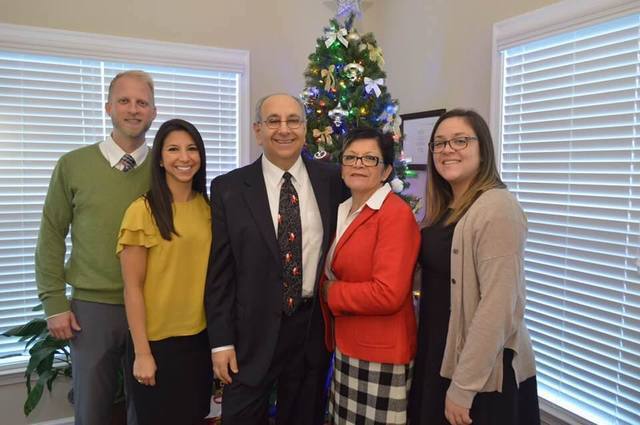
Ed Marquez with his family.
“Now, after so many years of service to the Lord in His Church, and seeing Ed and his family in the ways of the Lord, having made sacred covenants in the holy temple, and his service in the Church, even today as patriarch of his stake, I thank my Heavenly Father for His plan of happiness, which blesses the lives of so many of His children as it happened and occurs with my friend Ed,” Elder Krasnoselsky said.
When asked how the gospel has changed his life, Marquez answers simply, “The gospel is everything. I owe everything to the Lord.”
Lead image: Ed Marquez and Sergio Krasnoselsky are photographed with their entire class of Naval Aviation. Marquez can be seen in the third row from the bottom, third from the left. Krasnoselsky is on the fifth row from the bottom, second from the right.
